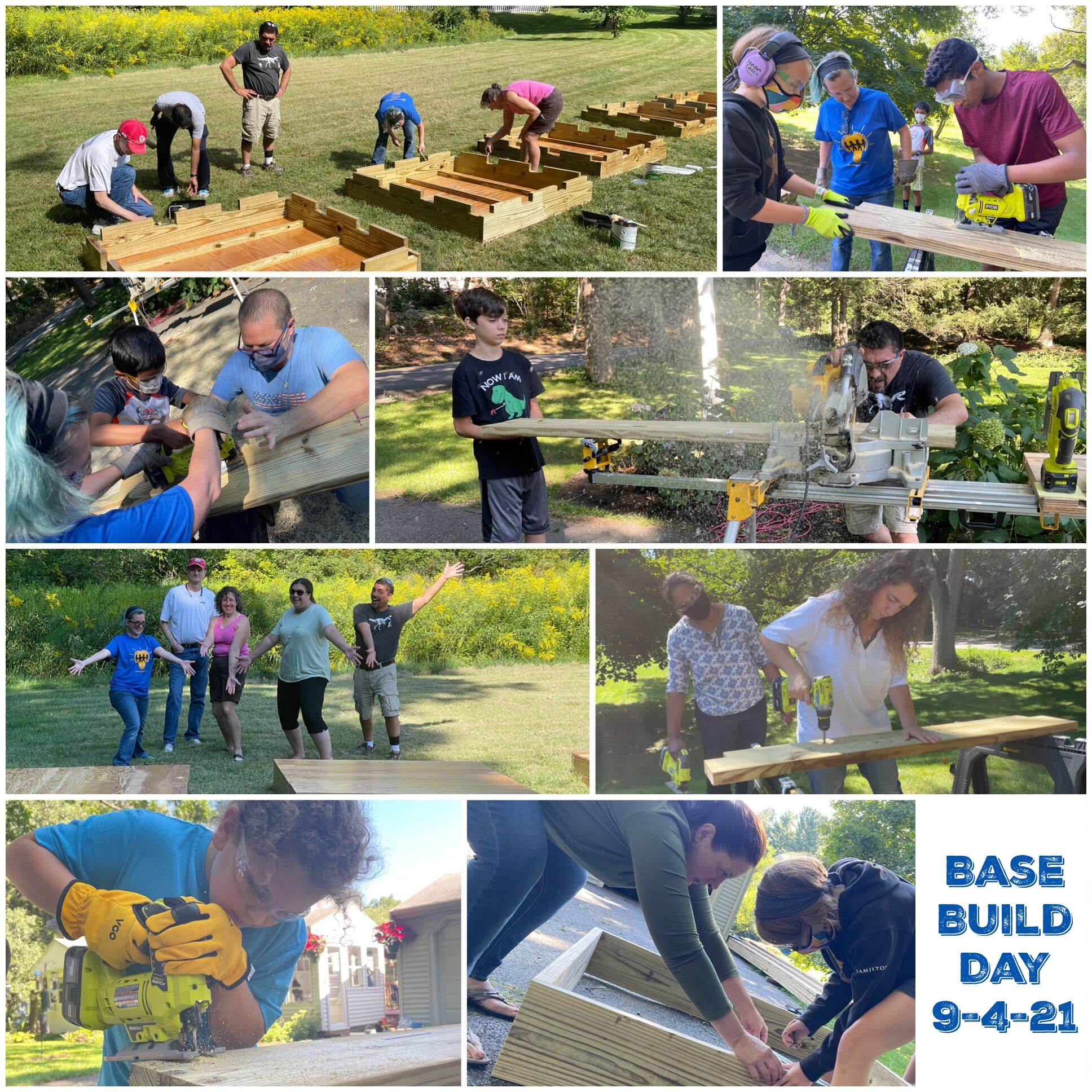
Meet the Team
Lance Levasseur
Lisa Hennessy
Nathan Levasseur
Mo Johnson
Joseph Vitale
The base build consisted of a large team effort amongst all the top/base DI participants:
In order to give our 6 different float tops the support they needed as well as the ability to actually float, we needed a sturdy and well-designed base that each float top could then be attached to. There were two different parts to our base: a wooden shell to which the tops could be attached, and a set of dock floats housed underneath.
The wooden base is made of pressure-treated lumber with a marine plywood top (marine plywood uses glues that can stand up to water). It has a square footprint of just over 5 feet per side and is designed to fit snugly over the dock floats underneath. Strips of wood under the marine plywood helped to create a gap between the plywood and the dock floats for screws and bolts (to avoid puncturing the dock floats). Pressure-treated wood is really heavy, so these bases are around 150 pounds each and ready to stand up to just about anything! The wooden bases had notches cut to fit over the handles on the dock floats. Those notches also proved important for being able to lift, drag, and hoist the floats.
To build the wooden bases, we held a Base-Building Day with a number of DI families. We started by creating a template around a set of dock floats, then cut out all the pieces, screwed them together, and polyurethaned them for good measure. The best part about this day was that both kids and adults got a chance to use tools they hadn’t before! Everything from an impact driver to a jigsaw to a table saw.
We put cleats on each side that would allow us to anchor the floats in different ways using rope. One option was to attach a cinderblock to the end of each rope to use as an anchor; the rope length could be adjusted based on the river depth at the float’s location. The other option was to tie the other end of the rope to a tree, fence or other “anchor” near the river — this ended up being the best approach to deal with a strong current.
And underneath the wooden base were the dock floats. Each wooden base had a 3×3 grid of 9 dock floats locked together underneath using a special connecting pin. The town had been gifted several hundred of these square black dock floats a while back (thank you Phillips Academy!) and they’d been sitting out in the woods, locked together in giant rafts, gathering moss (as well as snakes, spiders and poison ivy). We knew we wanted to use them, but to do that we needed to remove the connecting pins (and noone had the special key needed for that), plus we needed to move about 60 of them out of the woods. The awesome folks at Andover DPW fabricated a key using steel pipes and bolts, disconnected a whole bunch and transported them for us (thank you DPW!). Once we had the dock floats, we had to hose off the dirt and test them for leaks. And how better to test them than to have 3 DI kids try to sink them in a pool? That was great fun!

